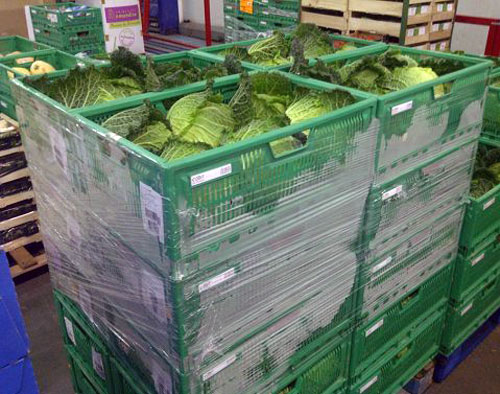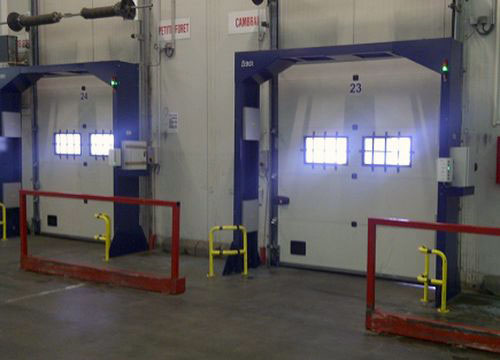French supermarket company Auchan Group will use radio frequency identification to manage its 1.8 million reusable plastic produce crates as they move from grower to distribution center (DC) to store, and through the washing process. The RFID solution, developed and implemented at Auchan’s produce DCs over the past two years, is intended to provide the firm with an eye on its leased containers, and with proof that they are being moved in a timely fashion, and washed according to European Union (EU) requirements. The technology, including tags, readers, software and installation, is provided by Orange Business Services, part of France Télécom. The EPC Gen 2 passive ultrahigh-frequency (UHF) RFID tags and readers were manufactured by IER.
With approximately 1,317 stores, Auchan Group is the world’s 12th largest food retail group. In 2007, the company chose to phase out the system of cardboard and wooden crates and pallets that it had been using, and switch to reusable plastic containers. That, says François Laveissière, the director of IT innovation for Auchan’s hypermarkets division, would help the firm reduce the amount of necessary storage space (the wooden pallets and crates are bulkier than the plastic containers), better protect the fruits and vegetables loaded into the containers, and provide a more attractive-looking presentation in a store when produce is placed directly on the sales floor, in its container, for customers to buy.

The company rents its reusable plastic containers from logistics provider Cogit LGC. However, Laveissière says, the containers are moved to many stores and distribution centers throughout France and Spain, and thus often seemed to end up lost or stolen—and were difficult to trace when this occurred. In addition, an EU regulation requires that those utilizing such reusable containers prove that they are washing and sanitizing them after each use. Without an automated tracking method, it was hard to determine whether every container completed that process before being reused.
To address this problem, Laveissière says, Auchan decided to attach RFID tags to the containers, and began working with Orange Business Services to develop an RFID solution that would allow the company to locate its containers, but not require employees to scan bar-coded labels, which would be tedious and time-consuming due to the large numbers of containers in use at any given time.

Before an RFID system could be taken live, however, Auchan and Orange Business Services began testing the technology to locate the best positioning for the RFID tags. The two companies determined that the best arrangement was to have Cogit place a pair of adhesive UHF Gen 2 passive tags on the front and back of each container, one tag per side. “It was very important to ensure we had a 100 percent read rate,” Laveissière states. To date, the companies have achieved an approximate 98 percent read rate.
Auchan Group then installed an RFID reader portal, built by Orange Business Services, at the loading dock of each of seven fruit and vegetable DCs located throughout France and Spain. The portals can read up to 200 tags on plastic crates at a time as they pass by on a cart or forklift, at a speed of up to 12 kilometers (7.5 miles) per hour. As containers filled with new produce are unloaded from trucks, the portals read the tags. Later, those same portals again interrogate the tags as containers of produce are loaded onto trucks for shipment to Auchan’s stores. By the end of this year, the company plans to provide IER RFID handsets to 130 stores; the same type of handheld readers will also be provided to its fruit and vegetable growers in 2012. The handhelds will be able to read ID numbers and forward that information to the company’s back-end server via Wi-Fi or GPRS connections. Portals are also being installed at the washing stations within Cogit’s own facilities.
Each tag has a unique ID number linked to the container’s serial number stored in Orange Business Services software residing on its cloud-based server. Empty containers are sent to Auchan’s fruit and vegetable growers, who load them with produce. In the future, the company reports, handhelds will be used to read the tags, thereby indicating to Auchan and its produce growers where each container is located, and that it has just been loaded with product. The container then passes through a distribution center, where the tag is read twice—once upon arrival, and again upon being shipped to a store. Handheld readers will be employed at the store to read the tags once more, and to store data indicating that the product has been received. The empty containers will then be transported to wash stations at Cogit’s facilities, at which point the tags will be read again, thus updating the Orange Business Services server to indicate that the containers have been cleaned and sanitized.

Additionally, the software will enable the retailer to create historic records in order to analyze the rate at which containers move through DCs, stores, produce plants and washing stations, and to then address issues as they arise.
Although the solution is not yet fully in use, it already provides some data to the company, Laveissière says, noting that the system allows management to determine how quickly containers are moving into and out of its DCs, and thereby recommend changes to the system in the event of possible delays.
In the future, Laveissière says, the store intends to begin piloting a system of tracking product loaded into a container by inputting that information onto the server, linked to that container’s ID number. In that way, the company will be able to track the location of product moving through the supply chain, and potentially issue an alert if goods spend excessive time at any particular location. In the future, Laveissière says he also hopes to begin utilizing the RFID-tagged reusable containers for other products, such as fish.

